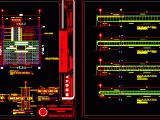
The Pros & Cons of PERT Analysis technique
2 April 2019Table of Contents
The Pros & Cons of PERT Analysis technique
What is PERT?
PERT stands for Program Evaluation Review Technique. PERT charts are tools used to plan tasks within a project – making it easier to schedule and coordinate team members accomplishing the work.
PERT charts were created in the 1950s to help manage the creation of weapons and defense projects for the US Navy. While PERT was being introduced in the Navy, the private sector simultaneously gave rise to a similar method called Critical Path.
PERT is similar to critical path in that they are both used to visualize the timeline and the work that must be done for a project. However with PERT, you create three different time estimates for the project: you estimate the shortest possible amount time each task will take, the most probable amount of time, and the longest amount of time tasks might take if things don’t go as planned.
PERT is calculated backward from a fixed end date since contractor deadlines typically cannot be moved.
The PERT technique focuses on the time and the cost each activity takes. This will hence influence the resultant time and the cost required for the completion of the entire project. This network analysis technique helps to understand the performance of the work throughout the course of the project.
Advantages of PERT
- Planning For Large Projects
- Visibility of Critical Path
- Analysis of Activities
- Coordinating Ability
- The What – if -Analysis
Planning For Large Projects: The scheduling of project activities is done easily with the help of PERT system by the project manager. This technique is more active in large sophisticated project works. As PERT is event oriented programming technique, three elements are necessary to define an event. They are:
- What is the time required to perform the event?
- What comes after the event?
- What is coming before the event?
Visibility of Critical Path: The PERT method will show the critical path in a well-defined manner. The critical path is the path with activities that cannot be delayed under any circumstances. A proper knowledge about the stack values with limited conditions of dependencies will help the project manager to bring fast and quality decisions that will favor the project performance.
Analysis of Activity: The activity and the events are analyzed from the PERT networks. These are analyzed independently as well as in combination. This will give a picture about the likely completion of the project and the budget.
Coordination: The various departments of the construction organization will deliver data for the PERT activities. A good integration is developed between all the departments which will help in improving the planning and the decision-making capabilities of the project team. The combination of qualitative and quantitative values from a large amount of data will help in improving the coordination of the project activities. This will also improve the communication between various departments of the organization.
What – if -Analysis: The possibilities and the various level of uncertainties can be studied from the project activities by properly analyzing the critical path. This type of analysis is called as what-if-analysis. For this various sets of permutation and combination is conducted. Among them, the most suitable combination is taken into consideration. This set chosen will be the one with minimum cost, economy and best result. This analysis helps to identify the risk associated with any activities.
Disadvantages of PERT
Various Demerits of PERT are mentioned below:
- Time Focused Method
- Subjective Analysis
- Inaccuracy due to Prediction
- Expensive
- Other Issues








